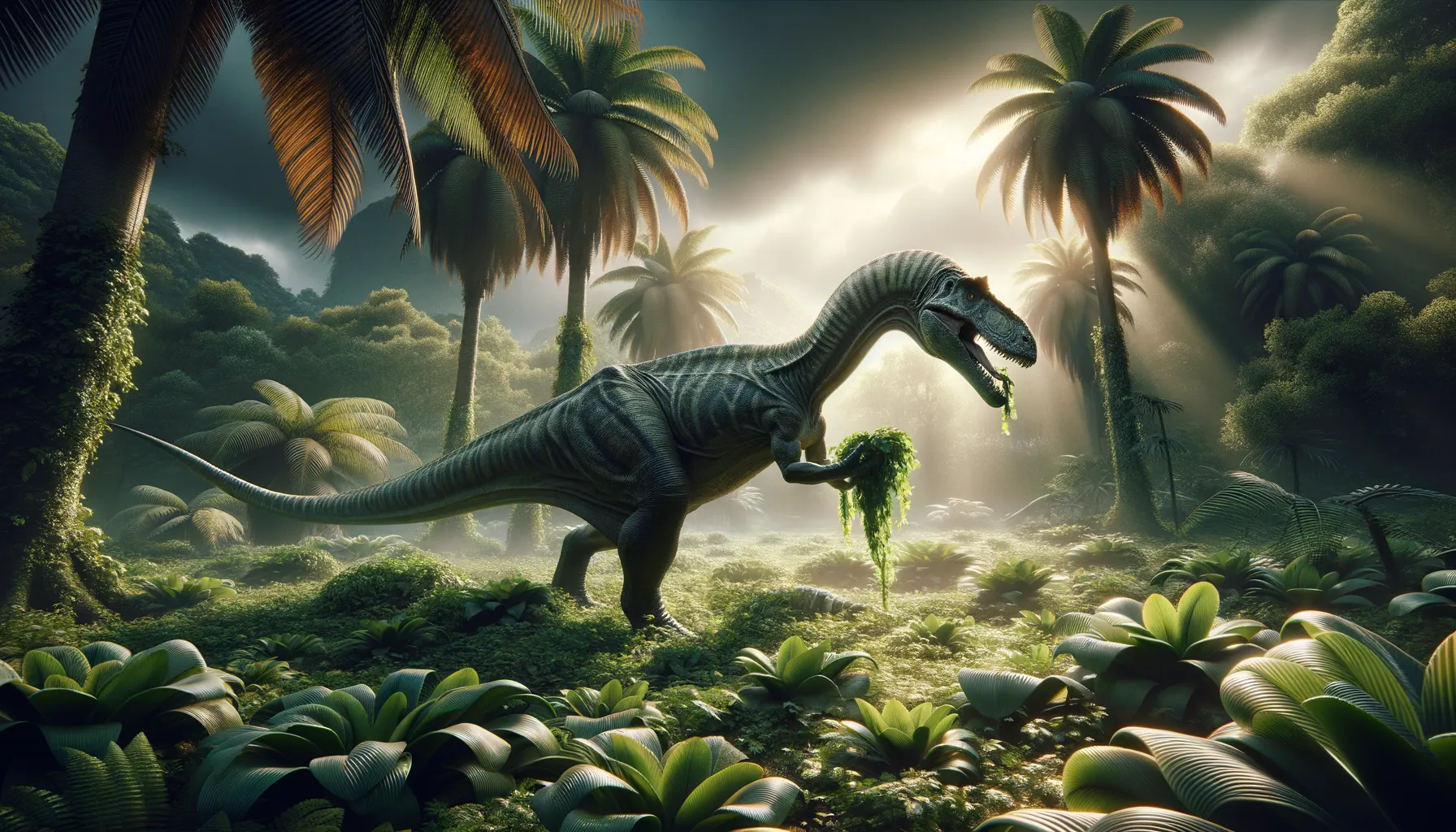
Osmakasaurus
A gentle giant of the Jurassic age.
Period
Jurassic
Length
About 9 meters long.
Height
Around 4 meters tall.
Weight
Approximately 1.5 tons.
Osmakasaurus is a lesser-known dinosaur that roamed the Earth during the Jurassic period. Its name, meaning 'serpent lizard', reflects its elegant stature and graceful form. As a member of the herbivorous family known for efficient foliage feeding, it thrived in diverse environments. Its fossils offer insights into a distinctive group of dinosaurs that adapted well to varying climates and available vegetation in their time.
Diet
Osmakasaurus primarily fed on plants, using its beaked mouth to strip leaves from trees and bushes. It consumed a variety of vegetation available in its lush Jurassic habitat, allowing it to thrive on abundant resources.
Hunting
As a herbivore, Osmakasaurus did not hunt. Instead, it foraged during daylight hours, carefully selecting nutritious plants. Its large size provided some protection against predators.
Environmental challenges
Osmakasaurus lived through fluctuating climate conditions, facing periodic droughts and food scarcity challenges. It adapted by migrating in search of more abundant resources. The presence of large carnivorous dinosaurs also posed significant threats to its survival, requiring constant vigilance from the herd.
Speed
Moderate speed, typical of medium-sized herbivores.
Lifespan
Osmakasaurus likely lived up to 30 years.
First discovery
Discovered in South Dakota in the early 21st century.
Fun Facts
- Osmakasaurus was a plant-eating dinosaur from the Early Cretaceous period.
- This dinosaur's remains were found in North America, specifically in South Dakota.
- Osmakasaurus belonged to the iguanodont family, known for their thumb spikes.
- It was a bipedal dinosaur but could also walk on all fours when needed.
- Osmakasaurus had a long tail which helped it maintain balance while moving.
- It lived approximately 115 million years ago during the Barremian stage.
- Although not the largest in its family, Osmakasaurus was still a substantial dinosaur, reaching lengths of about 5 to 6 meters.
Growth and Development
Osmakasaurus grew rapidly in its early years to avoid predation, reaching near-adult size within the first few years. Its development was marked by stages, with juveniles forming their own protective groups before joining adult herds. Fossils show bone growth patterns indicating robust health and a stable dietary source.
Habitat
Osmakasaurus thrived in environments rich in plant life, such as floodplains and forested areas. Its presence in these habitats suggests it preferred regions with ample water sources. Herd structures likely roamed large territories to accommodate their plant consumption needs, adapting well to both wet and dry ecosystems.
Interaction with other species
Living alongside a variety of dinosaurs, Osmakasaurus shared its habitat with other herbivores and predators. This coexistence led to competition for food but also a symbiotic balance in certain areas. Predators often targeted weaker members of herds, but the strong group dynamics of Osmakasaurus offered some protection.
Natural lifespan
Osmakasaurus had a natural lifespan of roughly 25 to 30 years.
Reproduction
Osmakasaurus likely reproduced by laying eggs in nests, with females guarding the nests until the young hatched. Parental care included protecting vulnerable hatchlings from predators. Fossilized nests suggest communal nesting strategies, possibly to share protective duties among herd members.
Social behaviour
Osmakasaurus displayed strong social behavior, living in herds that provided protection against predators. These herds were structured to allow for efficient foraging and movement across landscapes. Leadership within groups was likely dynamic, with shifts occurring based on age and strength.
Fossil locations
Fossils of Osmakasaurus have primarily been found in the Morrison Formation of the western United States. Key discovery sites are located in South Dakota, providing valuable information on its existence during the late Jurassic period. Continued excavations in these areas contribute to an expanding understanding of its ecological role.
